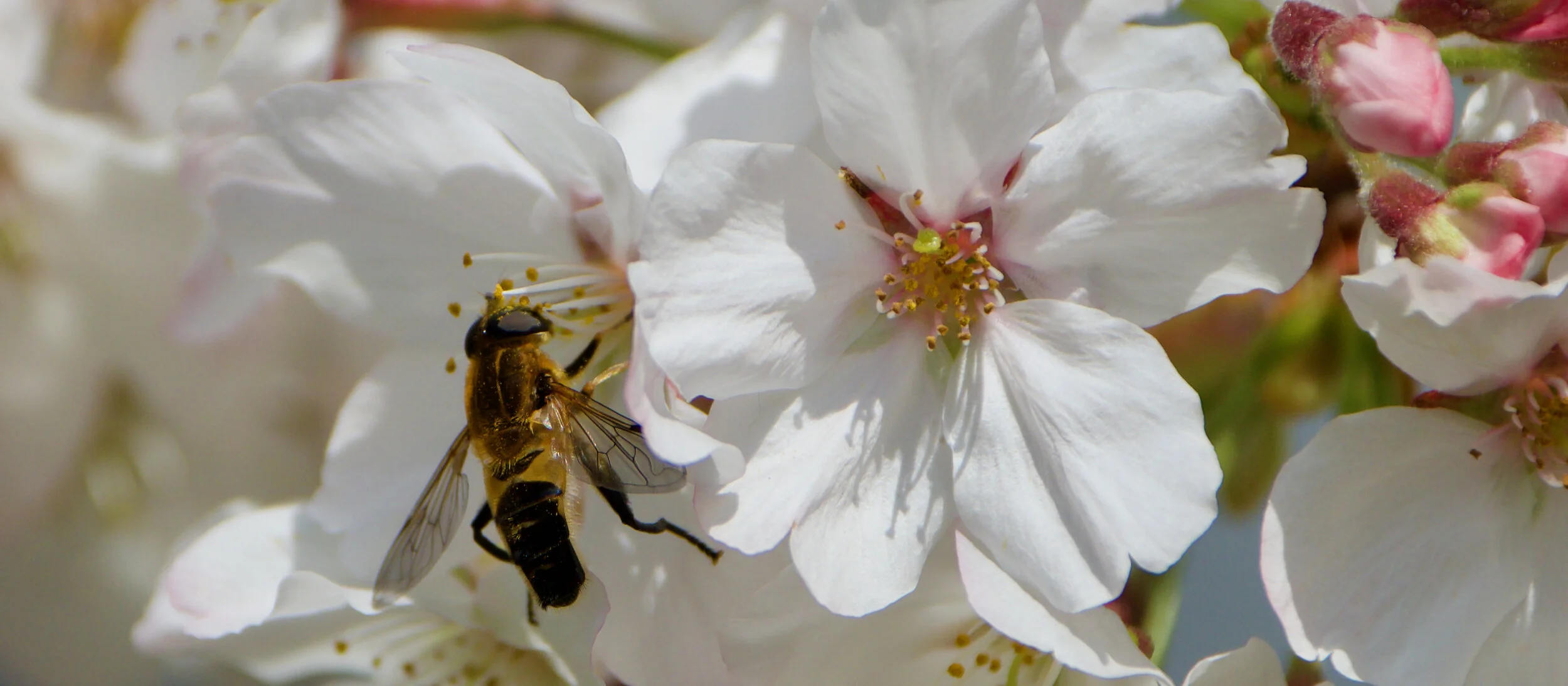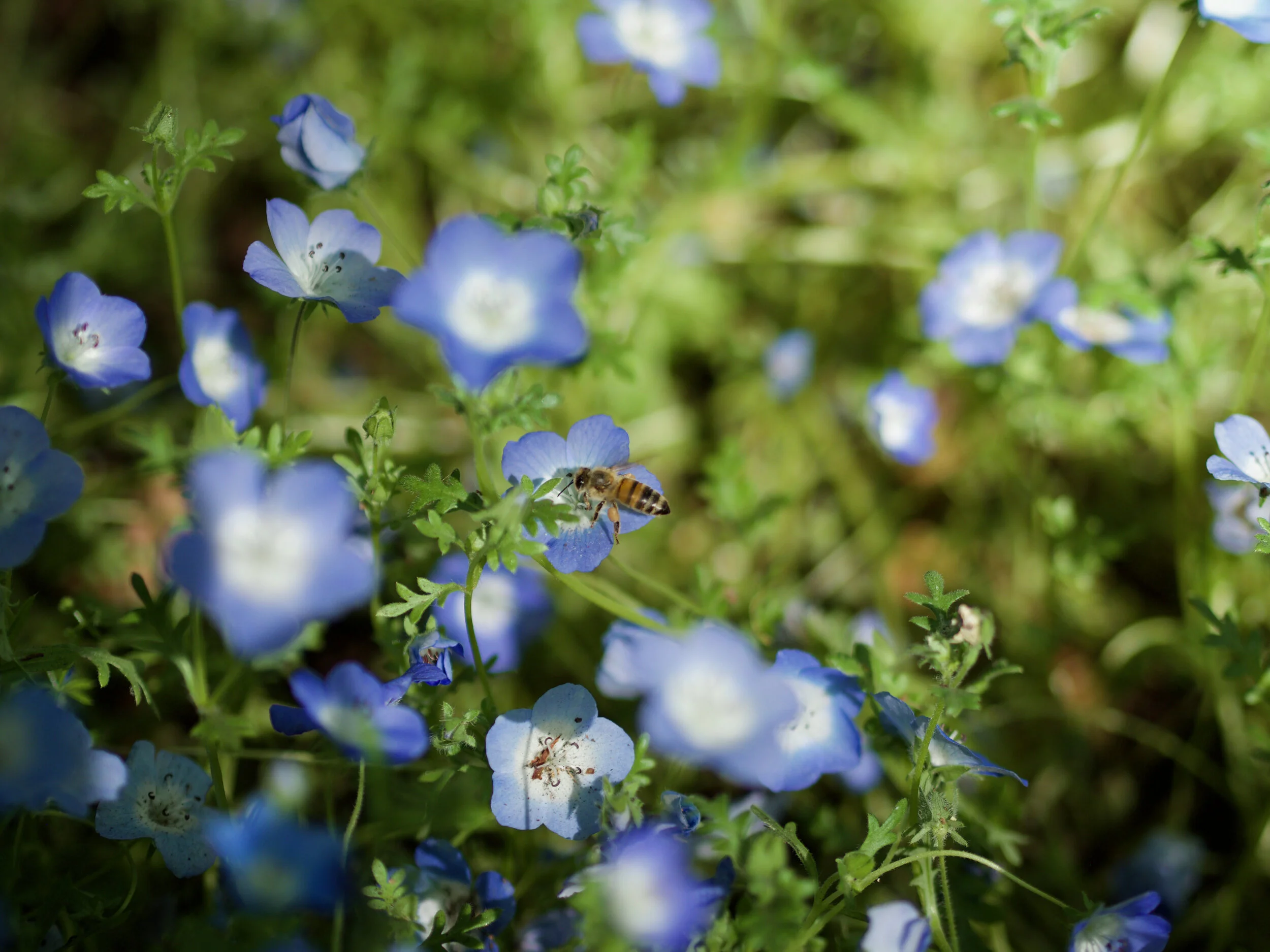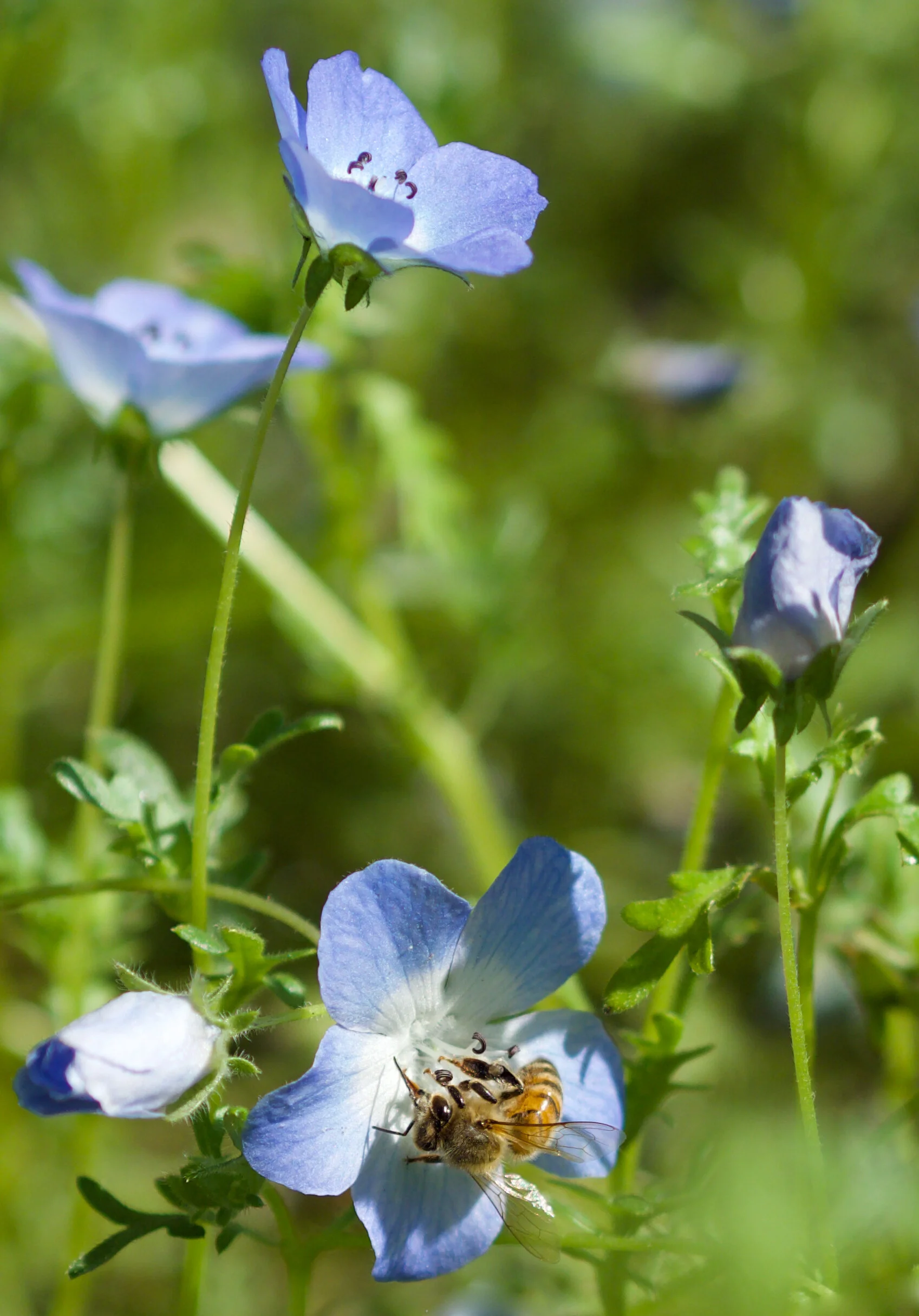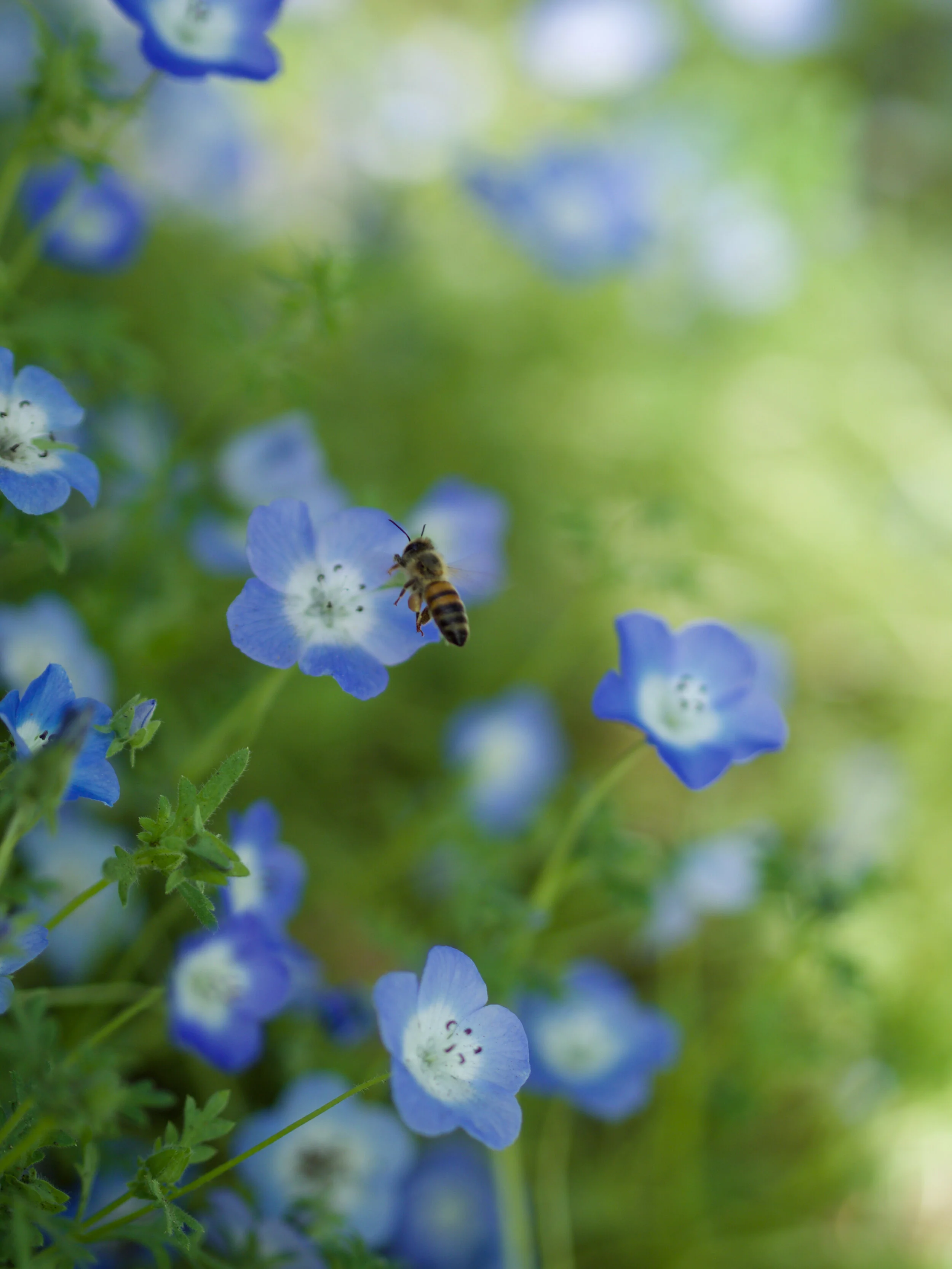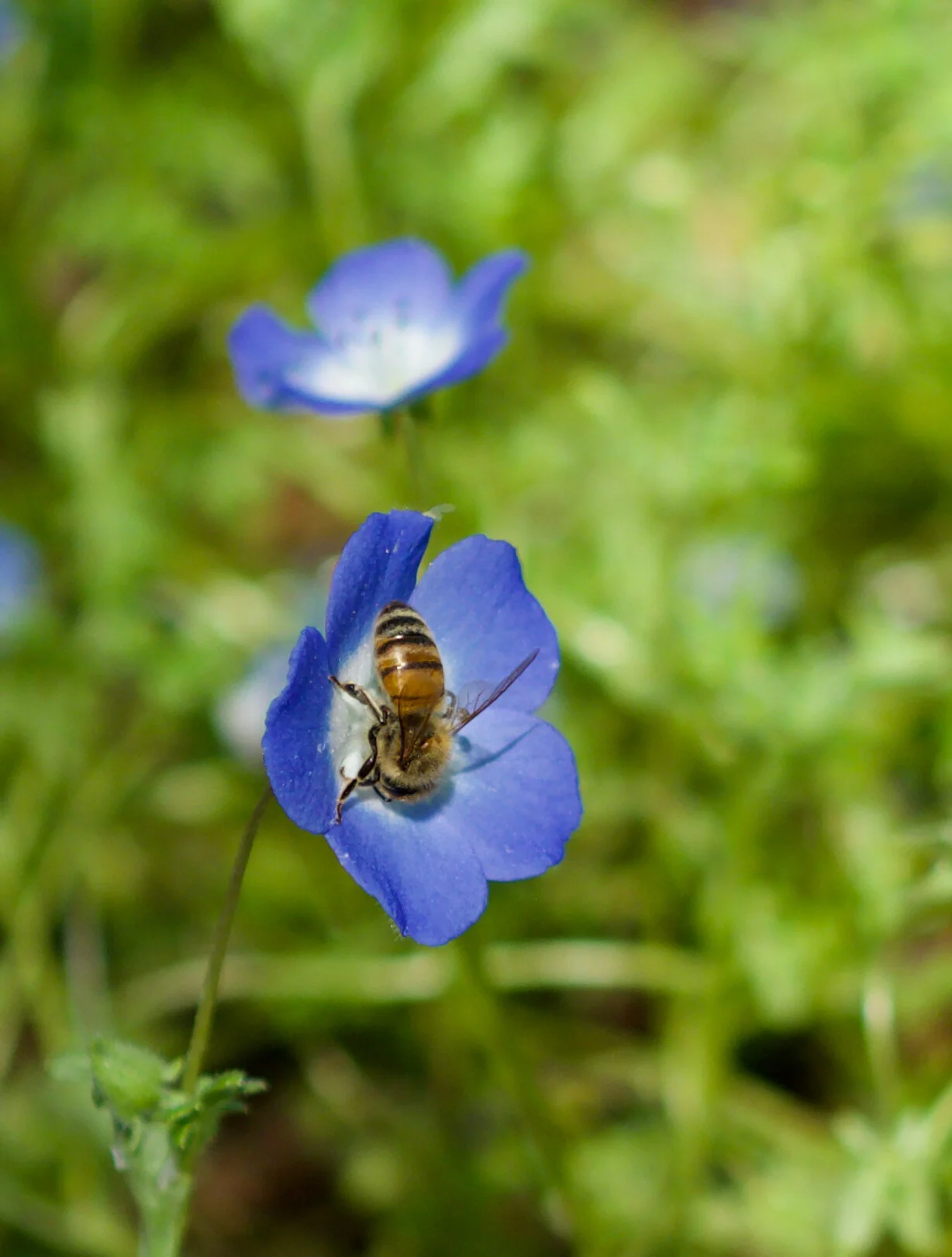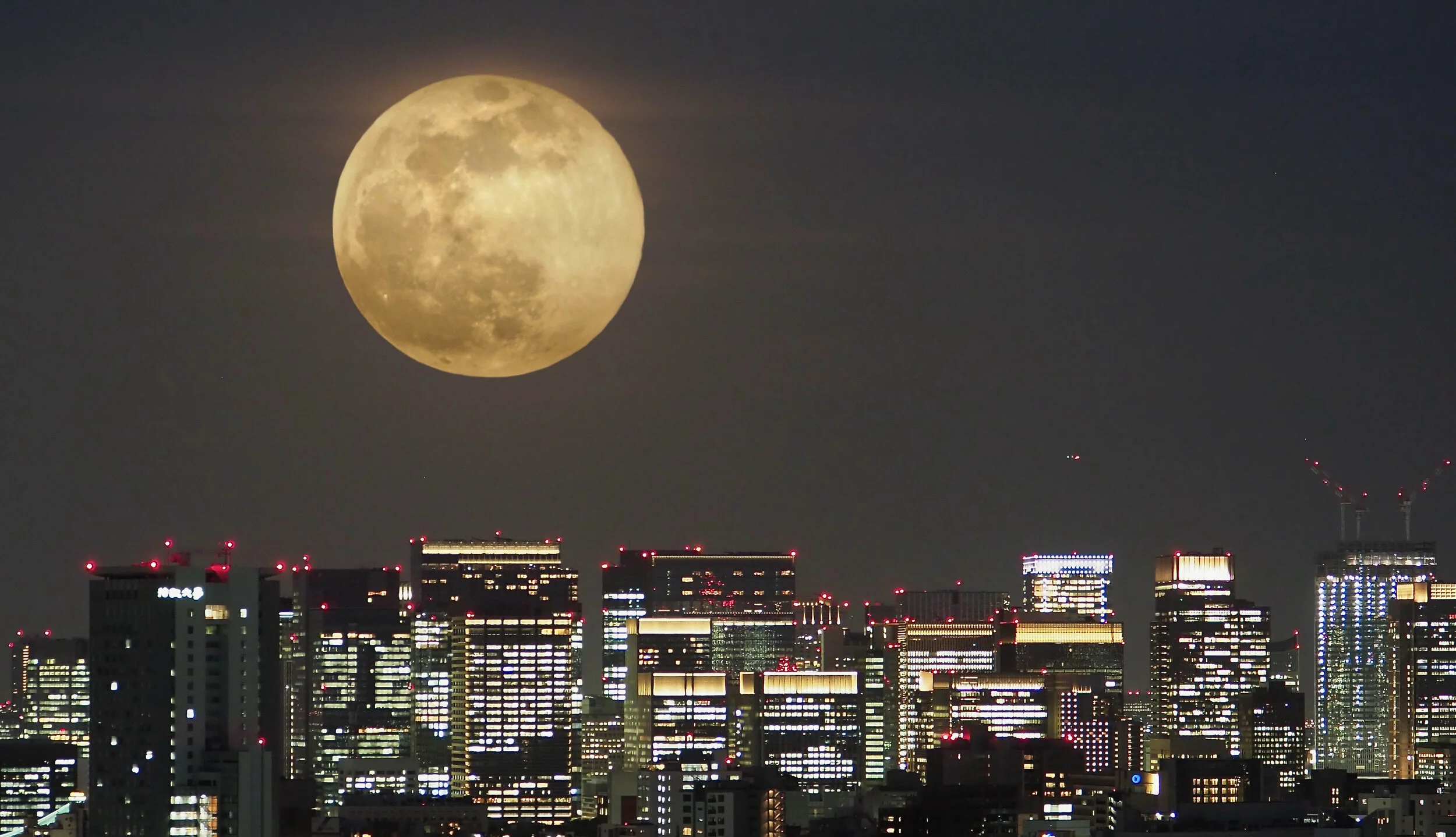Safe all the Bees!
I am sure everyone has heard “Safe the bees!”, but not everybody knows that there isn’t just one kind of bee. Actually there are over 20.000 bee species in the world [1], and while the sub species of the European honey bees (Yes, there are also more than 40 species of honey bees [2]) are also in decline, they are not the bees that need saving most. Wild native bees are the ones most threatened with extinction.
The Western or European Honey Bee (Apis mellifera) is the bee that mostly everyone knows and recognises as bee. These bees have been bred by humans for the purpose of honey production [3]. They don’t usually exist in nature, but belong to a beekeepers hive, except for some individuals that have escaped into the wild.
It is easy to believe that keeping bees would be contributing to safe them all from extinction, and to increase the number of pollinators in our environment, but sadly this isn’t true. It may even be quite the opposite, because the honey bees compete with the native bees and contribute to their decline [4] [5]. Additionally, studies have found that native bees are in fact better pollinators than the honey bees are [6].
Also in Japan most honey is produced by European honey bees, but this hasn’t always been the case. Before the European Honey Bee was introduced to Japan in 1876, all domestic honey was produced by the Japanese honey bee (Apis cerana japonica) [7].
In contrast to their European counterparts, the Japanese honey bees are a native bee species, that originally lives in the wild in Japan. They do not produce as much honey as the western bees, but they are much better equipped to deal with local threads and pests [8], they can fly at lower temperatures, and they are a part of Japans natural wild life.
In some places in Japan traditional beekeepers still value their native bees, for example on Tsushima. European honey bees cannot yet be found on this island [7].
Also some modern Japanese beekeepers add at least some hives of the increasingly rare Japanese honey bee to their apiculture [9]. One of them is Tanaka Atsuo, the leader of the nonprofit Ginza Honey Bee Project, or short Ginpachi [10] [11] [12]. The bees on these photos that I took in Hibiya Park are most likely from exactly this urban bee farm, as it is placed on a roof top very close to the park.
What can you do, if you wanna help safe the bees?
Plant varieties of flowers, especially native ones. Try to have something in bloom at any time that your climate allows it. This can be in your back yard, on your balcony, your office roof, or wherever you can find the outdoor space for it.
Provide access to wood or dirt for the wild pollinators to live in. Also hardware stores and their-like often sell bee houses, if you prefer something with a more wanted look.
Try to buy organic, local produce and food from regional farmers. No matter what kinds of bees or other pollinators we’re talking about, they are all threatened by pesticides and climate change. Reducing those factors will help all of them significantly.
Educate yourself, your children, your friends, basically everyone you know. Apathy could be almost as deadly to the bees as pesticides are.
I hope I have been able to provide you with an overview of this very broad topic of bees and saving them. If you are interested in learning more about it, feel free to check out my references, and also to do your own research of course : )
References:
[1] https://news.cornell.edu/stories/2011/10/native-bees-are-better-pollinators-honeybees
[2] https://www.osbeehives.com/blogs/beekeeping-blog/types-of-honey-bee-and-their-traits
[3] http://www.blueberryhouse.com/v002/farm_animal/fa_fb.asp?fname=b_p01
[4] https://www.scientificamerican.com/article/the-problem-with-honey-bees/
[5] https://blog.nature.org/science/2019/08/19/focus-on-native-bees-not-honey-bees/
[6] https://news.cornell.edu/stories/2011/10/native-bees-are-better-pollinators-honeybees
[7] https://www.tkfd.or.jp/en/research/detail.php?id=255
[8] https://alchetron.com/Apis-cerana-japonica
[9] https://tokyobling.wordpress.com/2013/02/02/ginpachi-urban-beekeeping-and-community-building/
[10] https://www.nippon.com/en/views/b00307/
[11] https://www.tokyoweekender.com/2017/01/how-tokyos-rooftop-bees-are-thriving/
[12] https://humanecologysophia.wordpress.com/2015/07/22/ginpachi-honey-bee-project/
[13] https://www.thoughtco.com/how-to-help-native-bees-1968108

